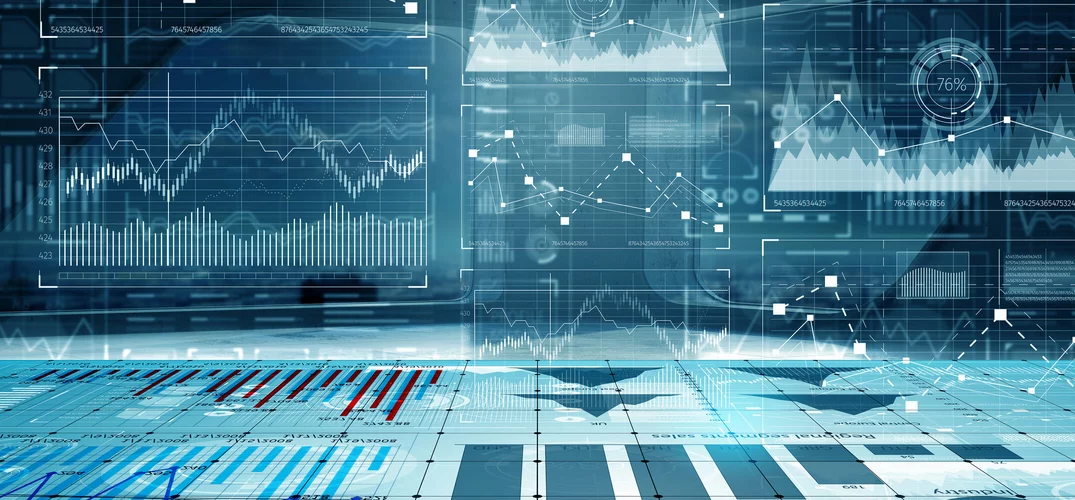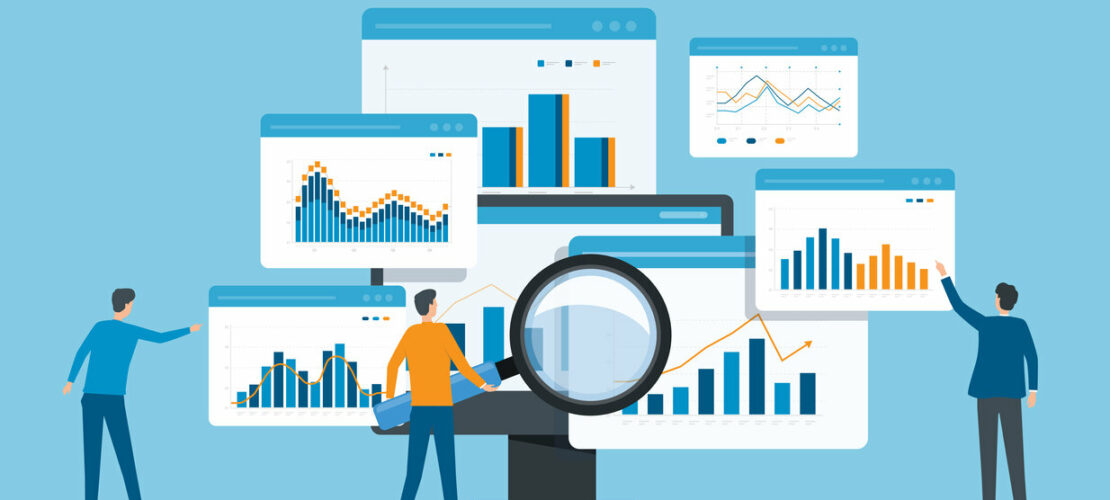
In today’s digital era, data visualization has become an indispensable part of business operations. As the lifeblood of strategic decisions, process improvements, customer understanding, and market trend identification, the value of data is undeniable.
However, with its sheer volume and complexity, data can be overwhelming. Here is where data visualization shines, transforming raw, intricate data into insightful, easily understandable visuals. As more than just attractive charts or vibrant infographics, data visualization is a key technique in data interpretation and business intelligence. As well, it is an integral step in the over-arching business intelligence arena.
By transforming data into visual form, complex ideas become more tangible, and abstract numbers take on a meaningful shape.
For example, imagine you’re leading a company that has branches in various regions around the country. You have monthly sales data in an Excel spreadsheet, which contains thousands of rows of raw numbers. Trying to decipher any meaningful insights from this mass of data would be time-consuming and, frankly, quite confusing.
But what if this data could be transformed into a vibrant heat map, immediately showing you where your sales are strong and where they could use a boost? Suddenly, those indecipherable rows of numbers are telling a clear and powerful story, providing the insight you need to make informed strategic decisions.
In this blog, we aim to demystify data visualization for you. The process is also referred to as data storytelling. Essentially, that’s what we’re doing. Data visualization tools, approaches, and use of it in an organization tells the story of what’s going on in the business in visual, clear manner.
We’ll explore what it is, why it’s essential, and how it’s transforming the way businesses understand and use data.
Whether you’re a seasoned business leader, an aspiring manager, or anyone who wants to make sense of the data in your organization, this beginner’s guide is for you.
It’s our goal to empower you with the knowledge and understanding you need to harness the full potential of your business data, without having you feel overwhelmed.
By the end of this post, we hope you’ll have a solid understanding of representing data and its critical role in today’s business landscape.
Moreover, we hope to inspire you to explore and implement data visualization techniques within your own organization, leading to more informed decision-making, improved business performance, and a competitive edge in your industry.
So, let’s get at it and decode the world of data visualization.
What is Data Visualization?

At its core, data visualization is the representation of data or information in a visual format. It translates complex datasets into a form that is easier to understand and interpret, making patterns, trends, and insights more apparent. But let’s break that down further.
Imagine you have a table filled with rows and columns of numbers – sales data, performance metrics, customer information – you name it. While the raw data is essential, interpreting it as it stands can be quite a challenge.
It’s hard to spot trends or derive meaningful insights from a vast array of numbers. This is where data visualization steps in.
Data visualization transforms that sea of numbers into engaging visuals such as bar charts, line graphs, heat maps, or even complex interactive dashboards.
For instance, a line graph might represent a company’s sales growth over a period, making it easy to spot seasonal trends or the impact of a particular marketing campaign. Similarly, a heat map might represent customer activity on a website, instantly revealing areas that get the most attention.
The aim is not merely to simplify data, but to provide a new perspective.
By representing data visually, we can see things that we might have missed in the raw data. It can reveal correlations, trends, gaps, or outliers that weren’t evident before.
The roots of data visualization trace back centuries, long before the invention of the computer. Ancient civilizations used rudimentary charts and maps to represent everything from astronomical observations to land ownership.
In the modern world, with the advent of computers and the explosion of big data, data visualization has taken on a whole new significance. It’s no longer a luxury but a necessity, as businesses of all sizes rely on it to navigate the vast and complex landscape of their data.
In the context of business, data visualization is a powerful tool for decision-making. When business leaders can visually analyze data, they can spot trends, track performance metrics, and understand complex situations. As a result, they can make data-driven decisions faster and more effectively.
In an era where data is plentiful, but time and attention are limited, imaging data is the compass that helps businesses navigate their path to success.
Following, we’ll explore how data visualization works, the principles that guide it, the tools that enable it, and the impact it can have on your business.
By the end of our journey, we hope you’ll see data visualization not just as a concept or a tool, but as a transformative approach to understanding and leveraging your business data.
The Importance of Data Visualization

In a world where data is generated at an unprecedented pace, the ability to effectively interpret and understand this information is vital. It’s much more than just a process of turning numbers into pictures; it’s a powerful method of communication, comprehension, and decision-making.
Let’s delve into our top 6 reasons why data visualization is important:
Simplifies Complex Data
The human brain processes visual information far more efficiently than it does text or numbers. Data visualization capitalizes on this fact by turning large and complex datasets into simple, easily digestible visuals.
This enables quicker understanding, analysis, and interpretation of the data. As a result, this saves valuable time and resources.
Uncovers Hidden Insights
Within a large dataset, there can be patterns, correlations, or trends that aren’t immediately apparent in raw data form. Visualization helps uncover these hidden insights, revealing the story behind the data.
For instance, a sudden spike in product sales might go unnoticed in an Excel spreadsheet. However, it becomes immediately evident when visualized in a line graph.
Facilitates Data-Driven Decisions
By presenting data visually, business leaders can see the bigger picture, detect trends, and identify strengths and weaknesses. As well, they can make strategic decisions based on tangible evidence.
For example, a heat map displaying customer engagement across different regions could help a company decide where to focus its marketing efforts.
Enhances Memory Retention
Visuals have a more significant impact on how we remember information. Data presented visually is more likely to be remembered, enhancing long-term memory retention. This is especially important when presenting data findings to stakeholders or team members.
Enables Effective Communication
Visuals are a universal language. A well-designed chart or graph can convey a complex idea that might be difficult to explain in words. By utilizing data visualization best practices, businesses can communicate complex data in a clear and compelling manner. This enables stakeholders, employees, and customers to understand the important data quickly.
Monitors Business Performance
Real-time data analytics dashboards enable businesses to monitor their performance constantly. Visual analytics, changes in sales, customer behavior, or operational efficiency become immediately visible. As a result, the information enables quick responses to any challenges or opportunities that arise.
By simplifying data interpretation, reveals hidden insights, empowers data-driven decisions, enhances memory retention, facilitates effective communication, and allows real-time business performance monitoring. This approach proves to be an indispensable tool in modern business operations.
It’s not just about making data pretty; it’s about making data useful. As a result, data turns it into actionable insights that drive business success.
As we continue, we’ll learn more about how data visualization achieves these outcomes and how you can make the most of it in your own business.
Key Elements of Data Visualization

Just as an artist uses a combination of colors, shapes, and lines to create a visually compelling painting, data visualization also relies on several key elements to create effective and meaningful visuals.
These elements work together to represent data accurately, make complex information understandable, and guide the viewer’s eye to the most important parts of the data.
Data visualization relies on specific elements to translate complex data into a visual medium. Color, size, and shape are used to distinguish different categories or types of data and indicate value.
The position of elements provides additional data points, while text offers context and aids in interpretation. Interaction, an element utilized in digital data visualization, facilitates a deeper understanding by permitting viewers to manipulate and examine data more closely.
These elements, when used strategically, create visuals that are both aesthetically pleasing and effectively communicate information.
Following, we will explore the different types of data visualizations and how these elements come into play in each type.
Types of Data Visualizations
Data visualization is expansive, with a multitude of ways to present data. The choice of visualization type depends on the nature of the data and the story you want to tell.
This approach offers a myriad of types, each serving different purposes and contexts.
For instance, bar charts and line graphs are excellent tools for comparison and illustrating trends, respectively. Pie charts aptly represent relative proportions, while scatter plots reveal relationships between variables.
More intricate visualizations like heat maps and histograms display patterns and distributions within a dataset. Additionally, box plots can uncover variations and outliers in your data, and dashboards provide a unified view of multiple key performance indicators.
Introduction to Data Visualization Tools

As the volume of data businesses deal with continues to grow, so too does the need for effective data visualization tools. These tools not only help in presenting data in a visually appealing manner, but they also facilitate a deeper understanding of the insights that the data holds.
There are literally hundreds of data visualization tools on the market today. Each of the tools offer a variety of features and capabilities. An experienced BI & Data Analytics consultant can guide you in selecting the best tool for your organization.
A few things to consider when selecting your tool:
- type of data you want to visualize
- size of the data set
- level of interactivity you need
- budget
In the context of this blog, we are not recommending one tool over another. However, the following list provides a snapshot of some of the current popular data visualization tools.
- Microsoft Excel provides a solid base for data visualization, offering basic, yet versatile visualization options like bar charts, line graphs, and pie charts.
- Tableau is a popular data visualization tool that is known for its ease of use and its ability to create interactive dashboards.
- Microsoft Power BI is another popular data visualization tool that is integrated with Microsoft Office.
- Qlik Sense is a data visualization tool that is known for its speed and its ability to handle large data sets.
- Looker Studio is a data visualization tool that is known for its flexibility and its ability to create custom visualizations.
- Zoho Analytics is a data visualization tool that is known for its affordability and its ability to integrate with other Zoho products.
- Domo is a data visualization tool that is known for its scalability and its ability to create real-time visualizations.
- Google Charts is a free data visualization tool that is easy to use and that offers a variety of chart types.
- FusionCharts is a paid data visualization tool that offers a wide range of features and customization options.
- Chartist.js is a free open-source data visualization library that is easy to use and that can be integrated with any web application.
- Datawrapper is a free data visualization tool that is easy to use and that offers a variety of chart types.
The number of data visualization tools available is constantly growing. New tools are developed daily to meet the needs of businesses to help interpret their data, as well as communicate and make smart, timely decisions.
Conclusion
As we navigate the information era, the ability to extract meaning from a sea of data has become a critical business capability. The benefits of data visualization empower us to break down complex data sets, reveal hidden patterns, and communicate insights in an effective, understandable manner.
From bar charts and line graphs to sophisticated interactive dashboards, a wide range of visualization types can cater to varied data and business needs. Equally, the plethora of data visualization tools available today provides options suitable for any organization’s requirements and budget.
Remember, effective data visualization is more than just attractive graphics. It is about telling a story, conveying insights, and driving decision-making. It offers a lens through which to view your data, transforming it into a visual language that everyone in your organization can understand and act upon.
The pathway to becoming a data-driven organization can be challenging, but with the right understanding and tools, you can harness the power of your data to drive business success.
At RTG Solutions Group, our BI & Data Analytics consulting team is here to guide you on your data visualization trek. We are committed to helping organizations leverage their data to the fullest, enabling informed decision-making and strategic growth.
If you’re ready to unlock the power of your data and transform the way you do business, contact us today!
